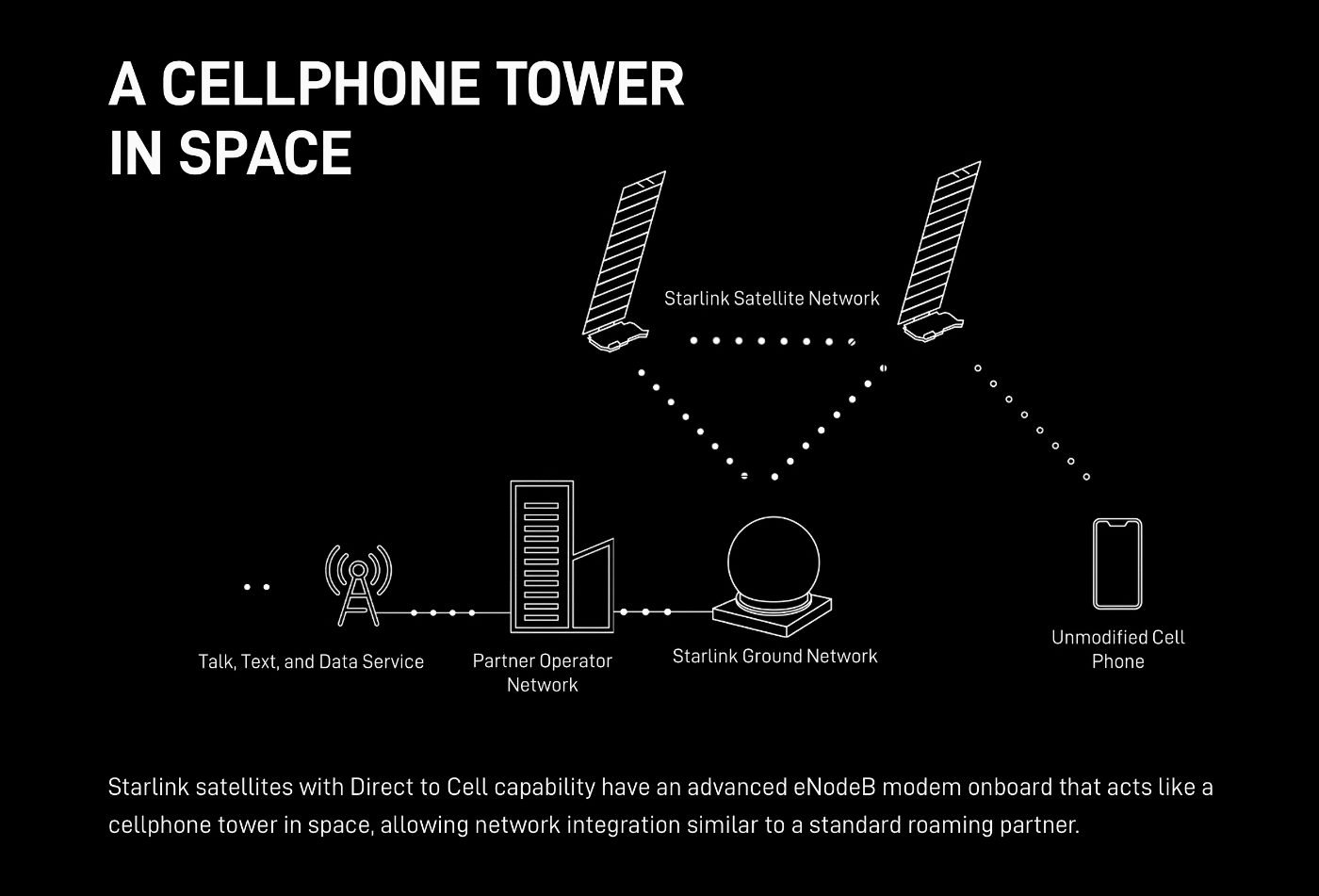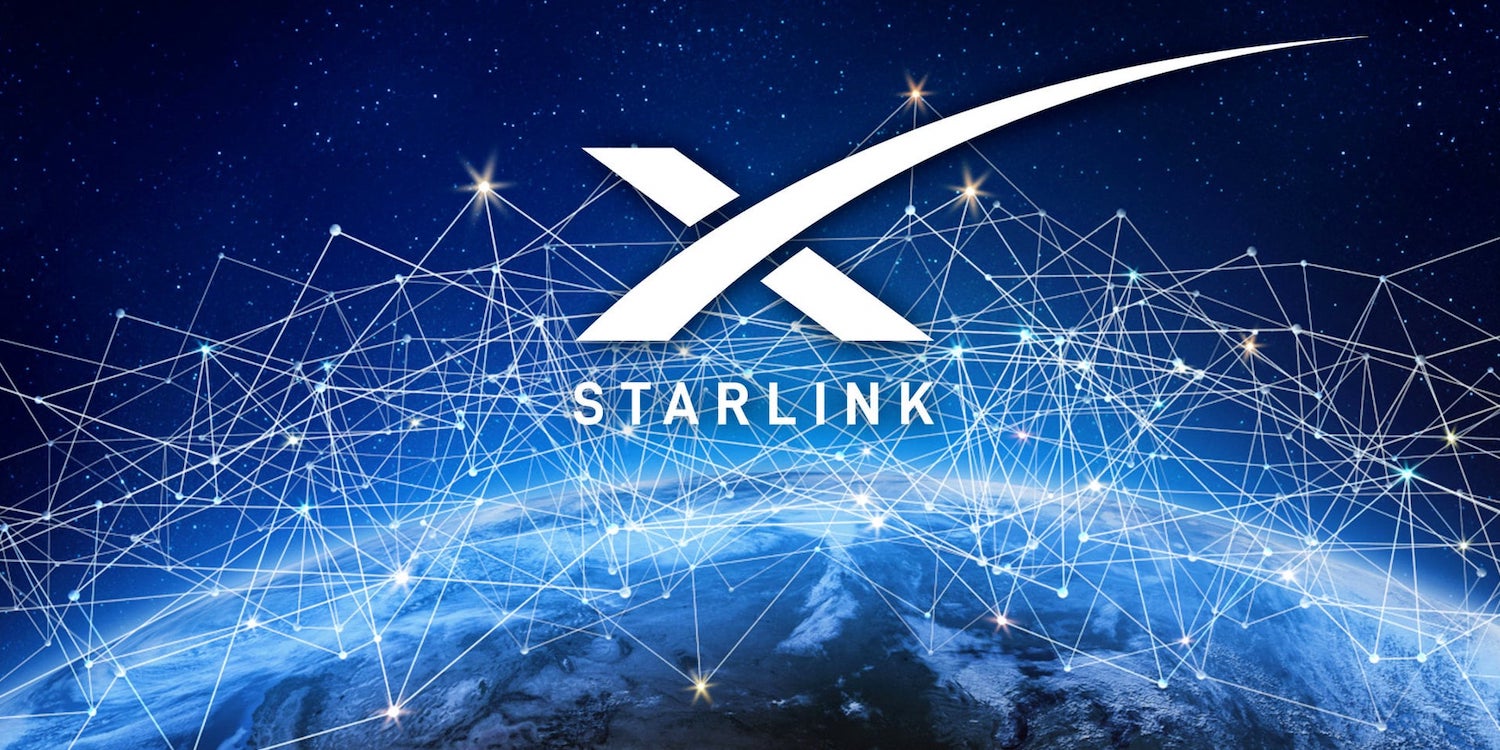On Monday, January 8, the Starlink team successfully sent and received our first text messages using T-Mobile network spectrum through one of our new Direct to Cell satellites launched six days prior. Connecting cell phones to satellites has several major challenges to overcome. For example, in terrestrial networks cell towers are stationary, but in a satellite network they move at tens of thousands of miles per hour relative to users on Earth. This requires seamless handoffs between satellites and accommodations for factors like Doppler shift and timing delays that challenge phone to space communications. Cell phones are also incredibly difficult to connect to satellites hundreds of kilometers away given a mobile phone’s low antenna gain and transmit power. Starlink satellites with the Direct to Cell payload are equipped with innovative new custom silicon, phased array antennas, and advanced software algorithms that overcome these challenges and provide standard LTE service to cell phones on the ground. As the global leader in rocket and satellite launch and manufacturing, SpaceX is uniquely positioned to rapidly scale our Direct to Cell network and will rapidly launch a constellation of hundreds of satellites to enable text service in 2024 and voice, data, and Internet of Things (IoT) services in 2025.
On January 2, 2024, we launched to orbit our first six Starlink satellites with Direct to Cell capabilities. Launch and early tests of the technology were all completed without issue. On Monday, January 8, less than 6 days after launch, we sent and received our first text messages to and from unmodified cell phones on the ground to our new satellites in space using TMobile network spectrum. This validates that our link budget closes, and the system works!
The Direct to Cell network will expand Starlink’s vision by providing ubiquitous connectivity and seamless access to text, voice, and data for LTE phones and devices across the globe. Text service begins this year, followed by voice, data, and Internet of Things (IoT) services in 2025. Developing a satellite network that connects to unmodified cell phones presents several new technical and regulatory challenges beyond those Starlink has already overcome in deploying a 5,000+ satellite constellation in a few years, serving more than 2.3 million customers across the globe. The first challenge is transmitting sufficiently strong radio signals to and from cell phones that were not designed to connect to satellites, with very low gain antennas and transmit power (max 0.2 Watts). Our team developed custom silicon onboard the satellite that is optimized for this application and reduces power and cost on the satellite. We also developed large 2.7 m x 2.3 m advanced phased arrays that use extremely sensitive radio receivers and high-powered transmitters for communicating with cell phones from space. The antennas were designed to ride on the Starlink v2mini satellites and are reliably launched and deployed to low-Earth orbit every few days by the Falcon 9 rocket. SpaceX is uniquely positioned to rapidly scale out our first Direct to Cell constellation in mere months, due to our unique and unprecedented vertical integration controlling both launch and satellite production in addition to operations. In the future, we will launch Direct to Cell satellites on Starship to improve the service even further and increase our launch cadence.
Since our vision is to connect everyone using their existing phones without needing a new phone, upgrades, or a special app, we decided to use standard LTE/4G protocols. Our satellites orbit hundreds of kilometers above the Earth’s surface at speeds of 7.7 km/s. As a result, compatibility with LTE timing, Doppler, and latency constraints are extremely challenging. For the vehicles to perform like a true cell tower in space, handoffs between vehicles and on the ground must be completely seamless to the user. To accomplish this, we architected the system including satellite altitudes, beam size and placement, elevation angles, and number of satellites, such that we are just at the edge of physics where LTE is achievable and reliable. We fly an advanced LTE modem onboard each satellite that operates like a cell tower in space.
The Direct to Cell network leverages the infrastructure we’ve built for Starlink over the past several years. Direct to Cell satellites plug into the existing Starlink satellite constellation via laser backhaul; meaning even our early satellites can provide services anywhere with regulatory approvals without requiring dedicated ground infrastructure. We also leverage all the existing networking, ground stations, and Points of Presence (PoPs) Starlink has developed. The Direct to Cell data travels over Starlink’s core directly to the operator’s core, providing a seamless integration.
In August 2022, we announced our first partnership with T-Mobile, and have since announced deals with Rogers in Canada, Optus in Australia, One New Zealand, KDDI in Japan, Salt in Switzerland, and Entel in Chile & Peru. The operators provide critical LTE spectrum in the 1.6- 2.7 GHz range that we use to transmit our satellite signals. This allows Starlink to integrate like a standard roaming partner with operators, and together we provide services directly and seamlessly to their customers. Operators in our network have access to reciprocal global access that allows their users to access the service when they travel to one of our partner countries. There is incredible demand and high interest in this program, and handset providers and mobile operators alike are eager to test and participate in a successful rollout. We worked closely with the Federal Communications Commission (FCC) to obtain initial authority to launch and test our satellites in record time, and we will continue to work with them to find innovative ways to connect people and save lives in emergencies. We are working closely with regulators around the world to bring this service to their countries as soon as possible.
This year, we look forward to expanding our testing to include greater coverage; launching hundreds of satellites to enable our text constellation; working toward our voice, data, and IoT constellation in 2025; and expanding our global footprint.

Source: SpaceX

